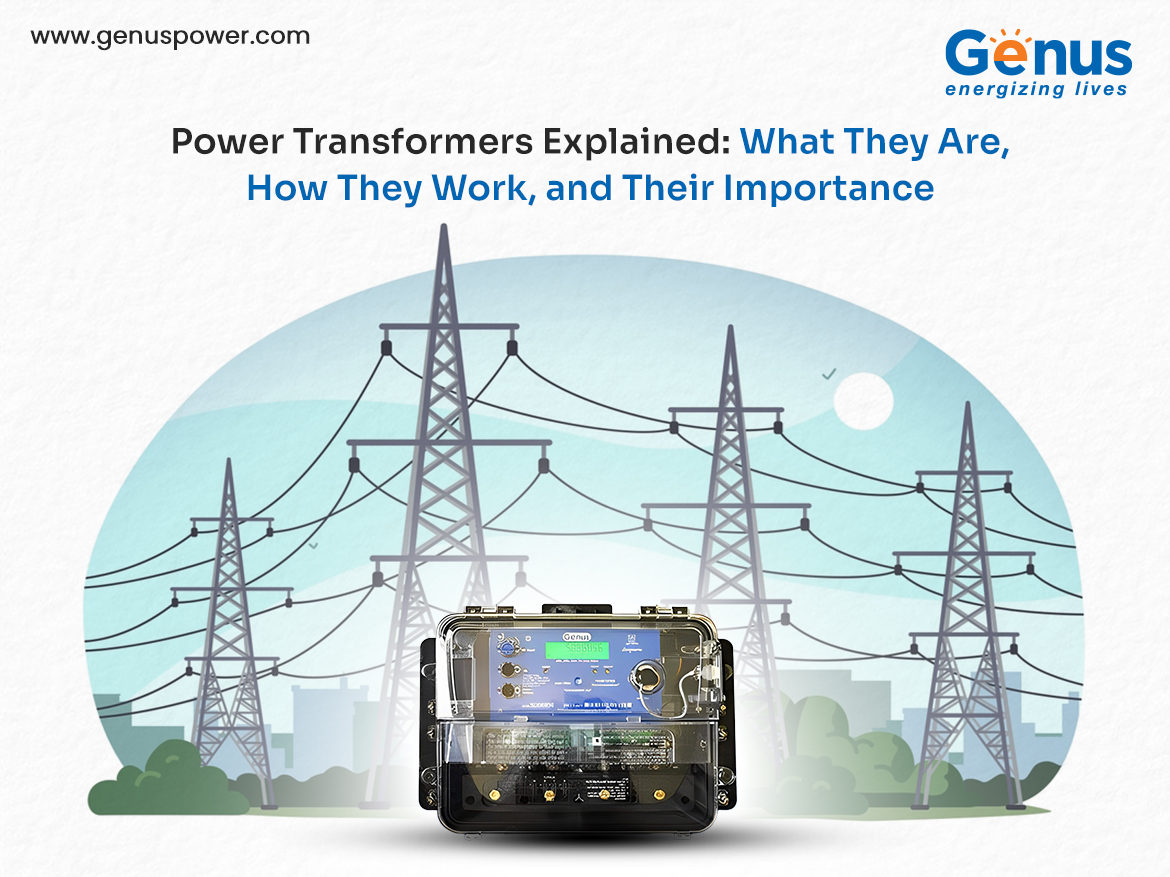
Power transformer setup ensures efficient and reliable transmission of electricity across various sectors. When placed within the power grid, it is calculated to maximize the effectiveness of distribution.
From large-scale industrial applications to residential power supplies, these essential components manage voltage levels and facilitate the smooth distribution of electrical energy.
A distribution transformer is integral in stepping down voltage from high transmission to usable levels for end-users. It is required both for safe energy transmission over long distances and for safe, reduced voltage distribution in households and industries.
Additionally, advanced metering infrastructure service provider companies rely on these transformers for accurate distribution transformer metering, which is crucial for effective energy management and billing.
In this blog, we’ll learn the basics of power transformers and explore their key functions, types, and benefits.
A power transformer transfers electric power between circuits without requiring moving parts. It utilizes the principle of electromagnetic induction to alter voltage levels efficiently for power transmission or distribution purposes. These transformers are generally used in power generation grids, distribution sectors, and power transmission systems.
Based on the installation location, transformers that are suitable for high-voltage applications and used at power generation stations are generally referred to as power transformers. A distribution transformer is most commonly used at distribution centers for domestic usage. They are built to carry lower voltages and are characterized by lower magnetic losses.
A transformer operates on the principle of electromagnetic induction, which is described by Faraday’s law. Its essential components include a primary winding, a core made of laminated steel sheets, a secondary winding, and insulation materials.
When an alternating current passes through the primary winding, it establishes a changing magnetic field around the transformer’s core. This phenomenon happens due to the magnetic effect of current flow.
With the flow of alternating current, the magnetic field inside the core expands and collapses alternatively. This continuously changing magnetic flux permeates from the inner core and reaches the secondary winding wrapped around the same core.
According to Faraday’s Law of electromagnetic induction, as the flux cuts through the secondary winding coil, an electromotive force is produced. By adjusting the number of turns in the two windings, a power transformer‘s turn ratio can be used to step up or down the secondary voltage relative to the primary voltage.
After passing through the isolated secondary winding, this transformed voltage is then available for onward power transmission or distribution applications.
Every residential, commercial and industrial building needs a distribution transformer to ensure power availability on the premises and continued operations.
With transformers, loss of power is minimized owing to their efficient energy transmission operations. Furthermore, they can function round-the-clock at maximum capacity in power distribution systems.
In order to reduce resistance, power transformers increase the voltage of the current during transmission. When electricity is transmitted over long distances, resistance in the wires causes power loss in the form of heat. By increasing the voltage with a step-up transformer, the current is reduced, which minimizes these losses during transmission. At the receiving end, a step-down transformer decreases the voltage to safer levels for distribution to homes and businesses.
Hence, these transformers are engineered in such a way that they ensure minimal energy losses in long-distance power transmission operations. This in turn ensures efficient and reliable electricity supply.
Distribution transformer metering plays a crucial role in optimizing energy distribution and reducing losses across the power grid. By accurately measuring voltage, current, and power consumption, these smart energy meters enable utility companies to monitor transformer performance and detect inefficiencies or anomalies.
This real-time data helps in reducing energy losses, optimizing load management, and ensuring that electricity is delivered reliably and cost-effectively. Moreover, distribution transformer metering aids in precise billing and compliance with regulatory standards. This makes it a key component in maintaining the integrity of the power grid.
With each passing day energy demand is growing rapidly and efficiency of power transformers has become paramount factors. This is where metering systems stands as a fundamental tool for achieving sustainable energy distribution goals.
Closing Thoughts
Transformers are indeed fundamental components in energy distribution systems, playing a crucial role in distributing electricity efficiently across vast distances. They ensure that power reaches homes, offices, and industries so we are able to go about our daily lives with no interruptions.With the rise of energy demands, power transformers will continue to gain significance in our efforts to build a sustainable and resilient energy infrastructure. We, at Genus Power offer a huge range of energy metering solutions to help build a resilient energy distribution system across the globe. If you have any inquiries, please contact our experts and let them guide you to the best energy management solutions.